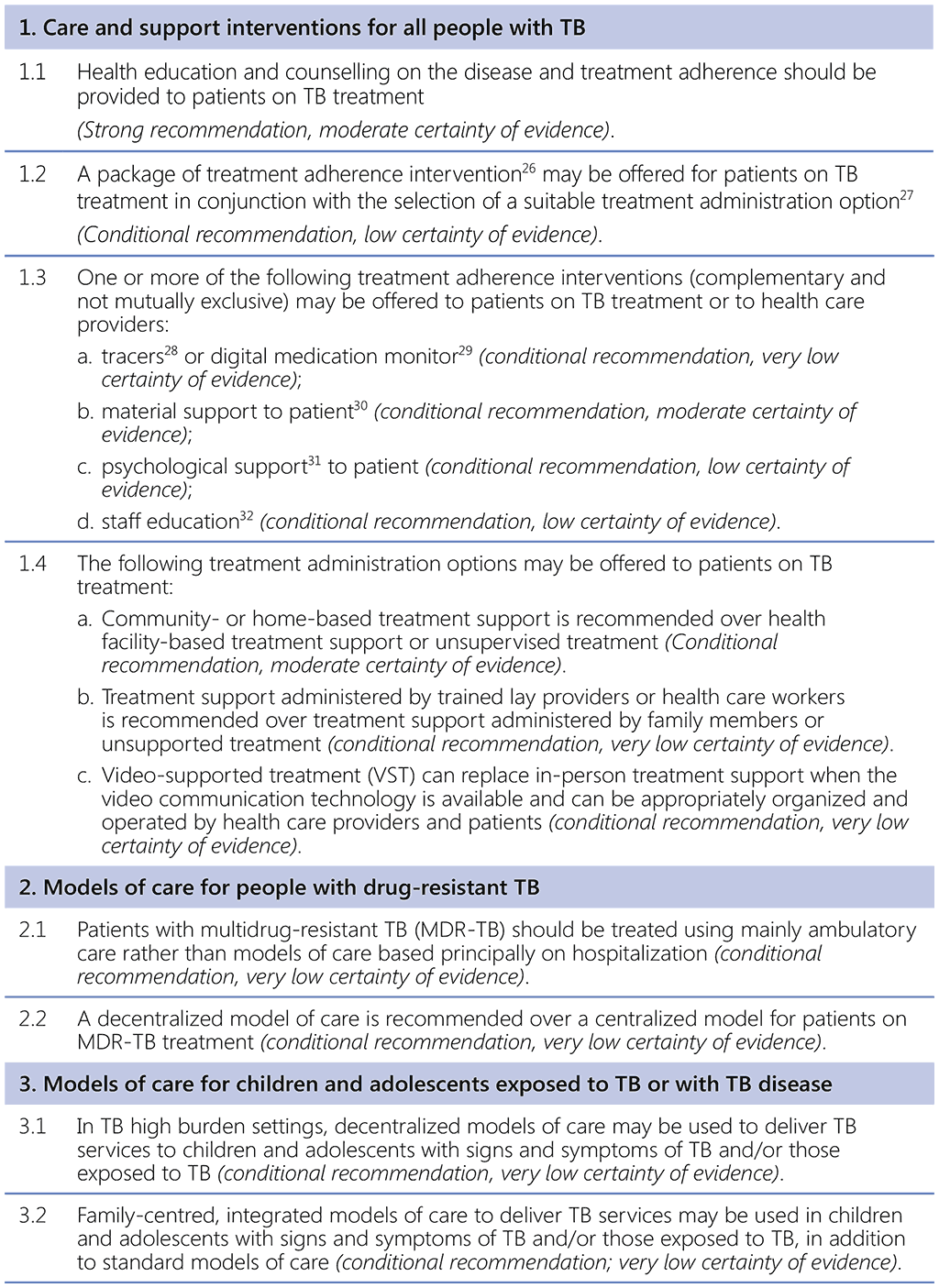Book traversal links for 1266
Tuberculosis (TB), including its drug-resistant forms, can affect people in all parts of society. However, its effects are often most devastating among the poorer and more marginalized members of a society. A person’s quality of life, social status and financial situation can be made worse both by the disease and by its treatment, namely: adverse drug reactions produced by the treatment, the high costs he or she may have to pay while undergoing care and treatment, having to miss work due to illness, and the stigma and discrimination linked to the disease. People who are poorer or have less social support may suffer these effects the most because they may have fewer resources to help them through the illness. The delivery of person-centred care and social support is essential to the management of TB and should protect human rights and support ethical standards, reducing the patient’s and family’s social and economic costs and using the most effective methods to prevent and treat the disease. Person-centred care and social support also contribute to improving the treatment outcomes and quality of life of people with TB. In many cases it also makes a difference in enabling the patient and family to access health care.
This chapter addresses the person-centred care approach to treatment administration and the social support framework for programmatic management of TB – both aimed at improving the quality of life of patients, enabling their adherence to treatment and reducing social and economic costs. The scope of the social support recommended in this operational handbook chapter includes several elements of the social assistance recommended in forthcoming guidance on social protection for people affected by TB. This module, however, emphasizes the interventions recommended to improve TB treatment outcomes.
Key WHO recommendations on TB care and support

26 Treatment adherence interventions include social support such as: patient education and counselling; material support (e.g. food, financial incentive and transport fees); psychological support; tracers such as home visits or digital health communications (e.g. SMS, telephone calls); medication monitor; and staff education. The interventions should be selected on the basis of the assessment of the individual patient’s needs, provider’s resources and conditions for implementation.
27 Suitable treatment administration options include various forms of treatment support, such as video-supported treatment and regular community or home-based treatment support.
28 Tracers refer to communication with the patient including via SMS, telephone (voice) calls, or home visit.
29 A digital medication monitor is a device that can measure the time between openings of the pill box. The medication monitor may have audio reminders or send an SMS to remind patient to take medications, along with recording when the pill box is opened.
30 Material support can be food or financial support such as: meals, food baskets, food supplements, food vouchers, transport subsidies, living allowance, housing incentives, or financial bonus. This support addresses indirect costs incurred by patients or their attendants in order to access health services and, possibly, tries to mitigate consequences of income loss related to the disease.
31 Psychological support can be counselling sessions or peer-group support.
32 Staff education can be adherence education, chart or visual reminder, educational tools and desktop aids for decision-making and reminder.

 Feedback
Feedback